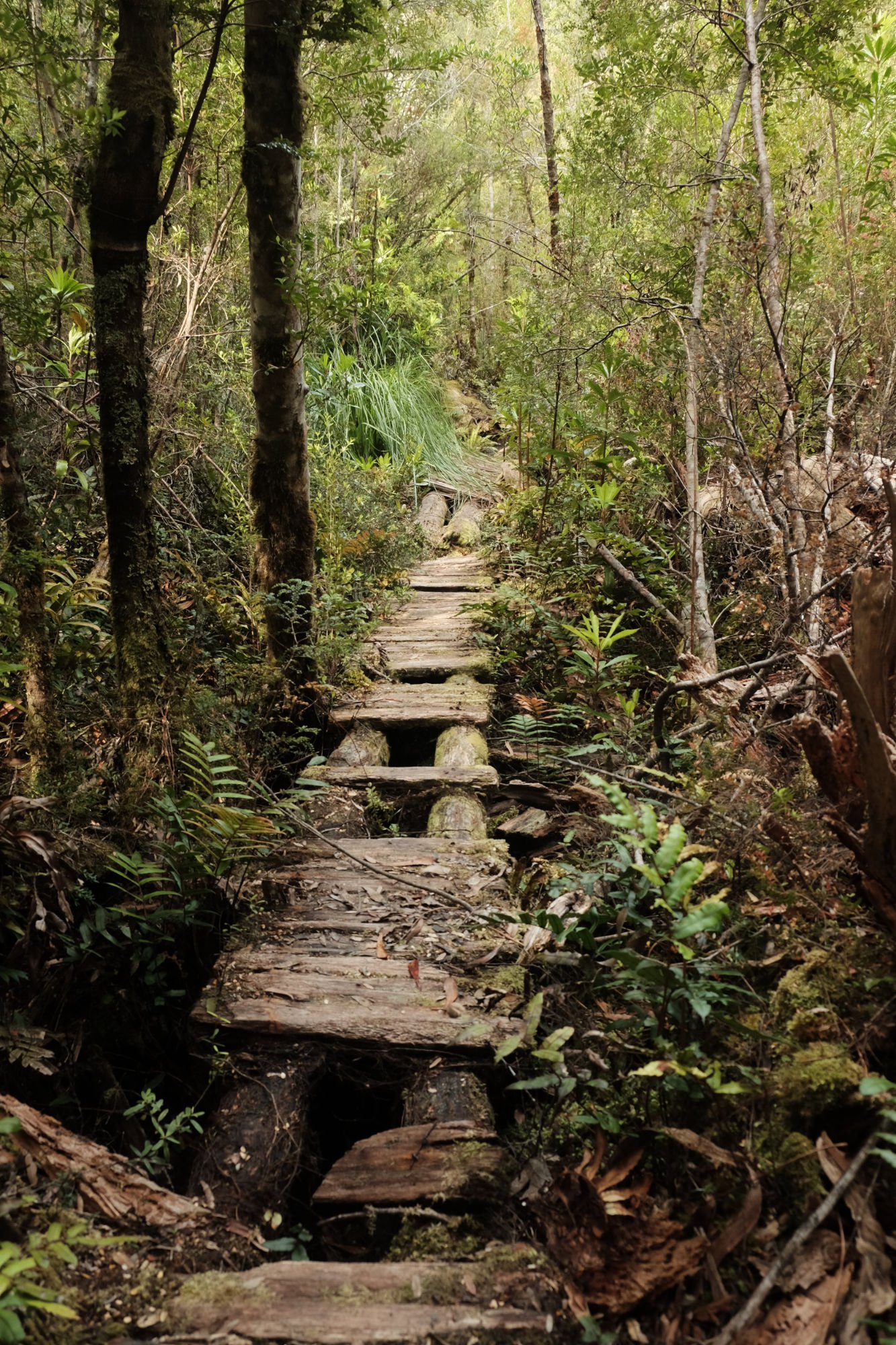Field notes & photographs by Robert Champion . Full essay intended in future.
FIELD NOTES: Pragmatic geometryThe FUTILITY of building on a low budget in a poorly accessed, high dynamism environment The BEAUTY derived from building on a low budget in a poorly accessed, high dynamism environment. Bracing/buttressing is sometimes expressed, rather than concealed.A good case study in how under-designing is better than over-designing. ‘Light handed’ instead of heavy-handed design. Foot traffic results in a slightly lower level than surrounding soil, which is then monopolised by water and gravity to scour it further. Uncanny juxtapositions between cheap offsite materials and local stone and timber.Careful stonemasonry occasionally creates ambiguity between what is site bedrock and what has been constructed.Path as catchment / water body. Offsite-derived materials:– Imported timber– Imported glass-reinforced plastic mesh– Galvanised steel screws, nails & other fixings– Star pickets– Triangular plastic arrows Site-derived materials– Stone– Gravel– Site-derived branches, logs & timber– Live tree rootsTo consider further and elaborate on: geometry. Excellent design precedent. Validates a feature of our approach to design, namely a preference that hard features being minimal, floating, and discrete, sitting within a fabric of vegetation, as opposed to the opposite (the latter being too frequently the case in designed landscapes). Seven days in the bush can get you a lot of photos of paths. Without a weather-sealed lens, in occasionally torrential rain. I get as excited by a Tasmanian boardwalk as I do an Italian cobbled street. Let’s be proud of what we have here as well. Continuing the tradition of being influenced by the vernacular, low budget solutions Landscape archaeology/guessing what a structure was intended for… was it a step, or retaining against the side of the path? Beauty that makes your heart sing may be found in pragmatic craftspeople and site solutions… perhaps more so that in pre-formed, offsite design processes. A potential case study for less built intervention in the exterior world. The more discreet interventions have a quality of ‘magical realism’ or ‘uncanny valley’, i.e. a natural scene with a subtle unnatural intervention that is not always clearly perceptible Heading there with fellow landscape practitioners and Cole Cochran and Nicholas Hosking (link), I found myself in a perpetual cycle of hanging behind for them to walk out of the frame, grabbing the shot and then jogging with 20kg on my back to catch up again. Identical boardwalk to design our ‘Garden of Five Senses’ project. Purely coincidental. Heirarchy of structure:– GRP boardwalks – Pine boardwalks– Pine duckboards– Stone stairs, walls– Rope hand-rails– Log ‘duckboards’– Log ‘stiles’ or staircases– Compressed soil– Ankle-deep mud– Thigh-deep mud Each typology occurs in various states of decay… Sometimes off-plumb, in various stages of becoming not level or flat… but still perfectly trafficable. In landscape design we strive for excessive levels of perfection and permanence.
























































